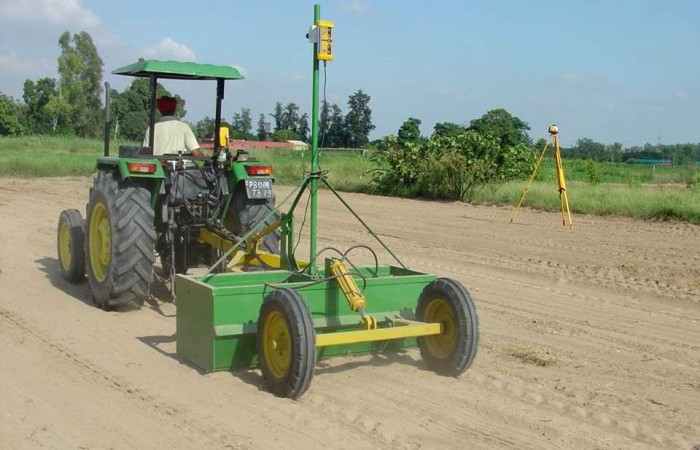
Life in rural India evokes an image of a farmer levelling the land with an oxen-drawn scraper. It is one of the most basic and integral farm preparations before sowing. Undulated land does not bode well for water absorption and farm productivity.
But for many farmers animal power is being replaced by machines. A laser land leveller- a machine equipped with a laser guided drag bucket- is much more effective and quicker in ensuring a flat table-top like surface. An even land means irrigation water reaches every part of the field with minimal waste from run-off or water-logging.
While mechanization is good news to farmers, climate change and climate variability pose unprecedented challenges to agriculture. We need climate-smart agriculture practices and technologies that save on scarce resources like water and energy but increase yields, incomes and reduce environmental footprints. When practiced together, a portfolio of climate-smart practices can equip farmers to adapt to changing weather patterns amidst depleting natural resources. For instance, groundwater in north-western India has been declining at alarming rates because of the overuse of electric pumps, largely by subsidized electricity, and inadequate recharge from erratic rainfall. Recent studies predict that there would be at least a 10 percent increase in irrigation water demand with a 1 °C rise in temperature in arid and semi-arid regions of Asia. Irrigation is the biggest user of groundwater in north-western India and unless steps are taken to revert this trend, farmers are looking at a water-scarce future. Continue reading.









